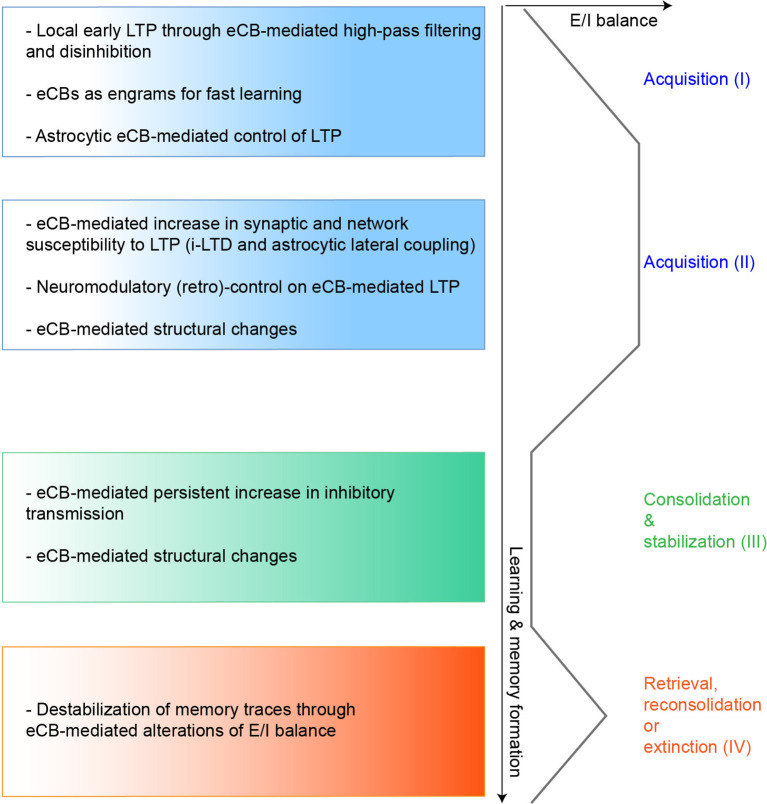Figure 2.
Hypothetical model of eCBs functions in regulating LTP during learning. We propose here a speculative model of eCBs contribution in controlling LTP expression and the excitation/inhibition (E/I) balance during the different learning stages, based on the mechanisms described in several in vitro and in vivo studies. During the initial phases of memory acquisition (I) eCBs could initially operate as high-pass filters, favoring LTP at strongly active synapses (Silva-Cruz et al., 2017). Also, eCBs-mediated disinhibitory mechanisms (such as DSI or i-LTD operating at different scales) could induce LTP at specific excitatory synapses and fine-tune the E/I balance during learning (Chevaleyre and Castillo, 2003; Xu et al., 2014; Busquets-Garcia et al., 2018). In parallel, eCBs, whose main modus operandi is on-demand biosynthesis and release, behave as highly sensitive and robust detectors of synaptic activity, allowing LTP induction even after a few jittered coincident activity patterns (Cui et al., 2015, 2018a). This feature may thus be used during fast learning and could contribute to episodic memory (Wang et al., 2016). Finally, eCBs can control the astrocytic-dependent release of co-factors necessary for LTP induction (Robin et al., 2018). In the later phases of memory acquisition (II), eCBs could increase the network susceptibility to synaptic modifications, near LTP induction focal points, with more or less spatial extent through heterosynaptic plasticity mechanisms (Chevaleyre and Castillo, 2003; Gómez-Gonzalo et al., 2015; Martín et al., 2015). Importantly, since eCBs can act as bimodal regulators of synaptic plasticity and interact with several neuromodulators, eCB-mediated LTP could also be switched back to normal, or turned to depression (Wang et al., 2014; Caballero-Florán et al., 2016; Xu et al., 2018), depending for instance on late behavioral outcomes, such as in reinforcement learning. During consolidation (III) eCB-mediated potentiation of inhibitory transmission and structural synaptic changes can stabilize acquired memory engrams (Monory et al., 2015; Ghosh et al., 2018; Hu et al., 2019). Finally, reactivation of memories (IV) especially emotional ones, increases eCB signaling, which can operate in feedback and control the lability of these memory traces by modifying the E/I balance (Li et al., 2008; Segev et al., 2018).

